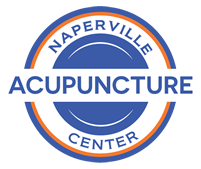Do you have heel pain? This condition seems to have become an epidemic. According to the Permanente Journal, plantar fasciitis is one of the most common causes of heel pain and has been estimated to affect about two million people in the US, resulting in more than one million visits to both primary care physicians and foot specialists! Unsurprisingly, plantar fasciitis most often strikes people who work on their feet. Surprisingly, it can hit even those who spend a lot of time sitting at work. At its worst, it can prevent people from running, working, and even walking. A pain in the foot can rapidly erode your quality of life!
What’s A Plantar Fascia?
The “plantar fascia” is a thick fibrous aponeurosis (tendon-like structure). It connects the bony part of the heel known as the medial calcaneal tubercle to the toes. Its job is to help support the arch of the foot. It is thought that repetitive overload from standing for long periods of time or running causes changes in the plantar fascia that can be either acute or chronic. The pain usually occurs on either the heel or instep of the foot. It is usually better after sitting down for awhile, but returns quickly after standing up. Sometimes it will feel better after taking a few steps, but not always.
Is It Inflammation?
Most words that end with “itis,” as in arthritis, indicate an area is inflamed. So is plantar fasciitis an inflammation of the tendon at the bottom of the foot? Surprisingly, it isn’t! Cellular studies have shown that patients with diagnosed plantar fasciitis have more disorganization of fibrous tissue rather than inflammation. This means that the tissues have been scrambled. It also means that because this is not an inflammatory condition, anti-inflammatories do not usually do much good.
Conventional Treatment of Plantar Fasciitis
The most common treatments include ice, nonsteroidal anti-inflammatory medication, stretching, physical therapy, night splints, custom orthotics, over-the-counter heel cups, corticosteroid injections, platelet-rich plasma injections, botulinum toxin injections, and finally, fasciotomy (surgery).
Corticosteroid injections are commonly given. This may relieve symptoms, especially during an acute flare or even with chronic pain, but recent studies are suggesting that less-invasive techniques may be more effective at providing long-term relief. It should be noted that patients are usually not expected to see significant improvement for six to eight weeks.
Acupuncture Treatment
Most of the people who come to us for relief of plantar fasciitis have already tried all of the above with little to no success. Our treatment starts with a careful evaluation. The foot, as well as the kinetic chain (leg and hip) are carefully checked. Are there restrictions in the hip or hamstrings that affect the foot? We also observe the gait (walking). Is stepping off the toe painful? Is there excessive pronation? We can also check for pes cavus (flat feet) pes planus (high arch).
The foot should be palpated (touched with pressure) to find the tender areas known as trigger points. Also, special attention must be paid to the tibial nerve. Many people are familiar with carpal tunnel syndrome, which is an irritation of the nerve that enters the hand. But a similar condition can occur in the foot. Pressure on the tibial nerve can result in what is known as tarsal tunnel syndrome.
Finally, in my experience, the most important piece of the puzzle is the movement of the foot at the ankle. This movement is known as dorsiflexion (pulling the foot up) and plantar flexion (pointing the toes down). A restriction in these movements are often involved in plantar fasciitis. This is important, because the lower leg rolls over the ankle when moving forward. If the ankle doesn’t move properly, the bottom of the foot, the plantar fascia, has to stretch more. This is how the tissue gets stretched out and irritated. For this reason, it’s critical to address the movement of the ankle.
The movement of the foot on the ankle is mainly accomplished by the muscles of the calf. We can address these muscles by using acupuncture on the calf muscles to reduce tension and restore their flexibility. This is followed by soft-tissue work (gua sha) to help elasticity. Finally, some kinesio tape is applied to help retain stability.
My experience is that treatment of the calf muscles will most of the time, but not all of the time, result in a marked reduction in pain and increase in mobility. Sometimes we will add stimulation directly to the bottom of the foot, sometimes we will add pain control points in other areas, such as the ear, for example.
The takeaway is this: if the foot can move better, it stops getting worse, and can start getting better. People can get back to exercising and enjoying life. Combined with exercise and education, acupuncture is the core of our custom-tailored treatment plan we provide to you after evaluation. If you’ve been suffering from heel pain and are unable to find relief, please schedule an appointment for an evaluation.
